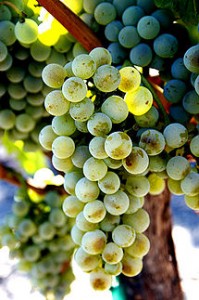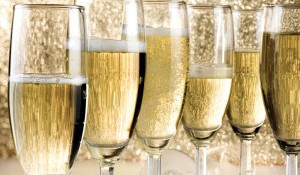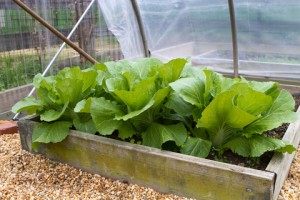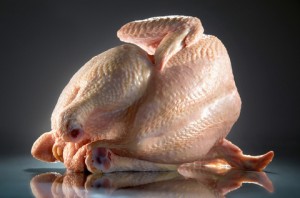by Lorri | Aug 15, 2012 | UnCorked
 The most visited winery in the United States is not in Napa or Sonoma but nestled in the mountains of North Carolina. The Biltmore Winery has been producing wine since 1971 as part of the lavish Biltmore Estates built by George and Edith Vanderbilt. The estate boasts about 1 million annual visitors from around the world, with at least 600,000 of those gracing the immaculate winery and tasting room. That’s a lot of wine enthusiasts tasting and exploring. I had the opportunity to visit with winemaker Sharon Fenchak about the success and vision for these North Carolina wines.
The most visited winery in the United States is not in Napa or Sonoma but nestled in the mountains of North Carolina. The Biltmore Winery has been producing wine since 1971 as part of the lavish Biltmore Estates built by George and Edith Vanderbilt. The estate boasts about 1 million annual visitors from around the world, with at least 600,000 of those gracing the immaculate winery and tasting room. That’s a lot of wine enthusiasts tasting and exploring. I had the opportunity to visit with winemaker Sharon Fenchak about the success and vision for these North Carolina wines.
The Biltmore Century Collection features the estate’s top-selling wines. The Century White, created in 1999, began as a limitedproduction wine available exclusively in the tasting room. The wine was created to celebrate the Biltmore’s 100th anniversary and legacy of the estate. But its popularity made it a permanent part of the portfolio. The Century Red was added a few years later. Fenchak said, “These wines work as a collection [bought] together since one offers those a sweet white option and the other a dry red.”
The red and white this week are summer-friendly wines. The red is ideal for serving with a prime rib on the grill or barbecue, and the white on its own as a refreshing aperitif. My tasting was at its best with the red slightly chilled.
- NV Biltmore Century White Wine, California/ North Carolina (about $16 retail)
The nonvintage Biltmore Century White Wine will be a favorite for those of you asking for a semi-sweet wine to enjoy this summer. Fenchak couldn’t agree more with the reasoning behind this blend and its production.
“We wanted to make an aromatic wine that, when you just smell it, you would want to drink it.”
It’s a blend of aromatic white grapes, gewurztraminer, Muscat canelli, Riesling and symphony. All of these grapes bring a balance, Fenchak says, that “would create a sweet white wine with balance of acidity, sweetness and alcohol — producing a wine that was refreshing and not syrupy like some sweet wines can be.”
As production grew for the winery they began buying fruit from growing areas in California as well as an addition of their own indigenous grapes. “Certain grapes just can’t grow with the rain and humidity of North Carolina but we knew the taste and blend we wanted to create.”
The Century White is 98 percent from California’s Mendocino and Monterey regions and the remaining 2 percent from Biltmore’s North Carolina vineyards.
- NV Biltmore Century Red Wine, California (about $16 retail)
This wine is a fruity, Italian-style red blend of sangiovese and merlot.
“We knew from the feedback in our tasting room people wanted an approachable red wine,” she says.
Fenchak’s vision was to combine just the right grapes for a “fruity but balanced wine.”
She also wanted to create a food-friendly wine that matched the flavors but didn’t compete. For this wine the juice is fermented in contact with the skins, allowing for the uniqueness in the color and balance of flavors. They then press and transfer it to French and American barrels to age 10 months to 18 months.
by Lorri | Aug 8, 2012 | UnCorked
 Semillon (sem-ee-yon) is a chameleon-like wine. It can be bone-dry, rich with ripeness or lusciously sweet. When mass-produced, it can be simple or decadently sweet.
Semillon (sem-ee-yon) is a chameleon-like wine. It can be bone-dry, rich with ripeness or lusciously sweet. When mass-produced, it can be simple or decadently sweet.
Its unusual name raises the question: Is it a grape or a French wine region? It is, indeed a grape. And you may find it hidden behind a French Bordeaux label or lost within a blended wine.
But a few producers let it shine on its own. Growers in Australia’s Hunter Valley region in New South Wales have created an exceptional following by those seeking this grape solo. The wine is dry when young, but after about 10 years it begins tasting like rich, buttery marmalade. Wineries in neighboring Barossa Valley, in south Australia, offer a different style made from this grape, with a more steely lime character.
Semillon can be a great wine, but it is in France’s Sauternes and Barsac regions that it really shines. The grape in France has a very thin skin, making it perfectly susceptible to noble rot or botrytis, which growers welcome. Once it has survived in the vineyard for a long growing period, it is blended with sauvignon blanc. Semillon contributes weight and the ability to age in oak, while the sauvignon blanc adds acidity and flavor.
THE VALUES
- 2011 Peter Lehmann Semillon, Australia (about $12 retail)
- 2011 Penfold’s Rawson Semillon–Chardonnay, Australia (about $9 retail)
- 2011 Rosemount Estate Semillon–Chardonnay, Australia (about $9 retail)
THE SPLURGES
- 2010 Loan Barossa Semillon, Australia (about $24 retail)
- 2010 Leeuwin’s Sibling Sauvignon Blanc-Semillon, Australia (about $26 retail)
- 2010 Chateau d’Armajan Sauternes, France (about $46 retail)
by Lorri | Aug 1, 2012 | UnCorked

A few weeks ago a friend asked for my advice on the perfect drink to celebrate the high points in life. It’s always interesting because I want to blurt out, “Champagne, of course,” but then I remember many other sparkling wines are equally appropriate to deliver the celebratory pop!
I consider a wedding the most important celebratory event of most of our lives. If you are going to splurge for Champagne, this is the occasion to do it. Events with a large number of guests are where this splurge becomes a challenge. Remember it doesn’t need to be the same brand or bottle served throughout the reception. People tend to remember tasting the first and last glass of the celebration, so remember this timing when considering the budget.
The golden wedding anniversary celebration deserves the paramount. But because the guest list will likely include several generations, it’s best to stay with familiar styles your guest will enjoy. These may be slightly sweeter or off-dry. Keep in mind this is also a group more likely than most to appreciate a vintage Champagne or a special bottle you’ve been holding out for the occasion.
A 21st-birthday celebration generally will involve younger guests and most likely not all able to savor the bubbly. For those who have cellared a wine for the occasion this is the ideal moment for your vintage Champagne to be opened. To keep things festive for everyone, consider serving an alcohol-free sparkling beverage.
Some christenings and bar mitzvahs are celebrated during the day and can stay with a more casual wine like a California sparkling or Spanish cava. If the menu includes sweets, a Moscato d’Asti will not only be an ideal pairing but a safe wine for serving a diverse crowd.
by Lorri | Jul 25, 2012 | UnCorked
S alad was once merely a refreshing collection of leaves and herbs dressed with oil and seasoning, but many of our creations are becoming all-out meals. Our summer menus are much like those in every other household trying to beat the heat and keep it light. Salad (and not just the mixed greens standby) is a staple each week at dinner, so I am always looking for the ideal wine pairing and have started fine-tuning our salads to maximize the match.
alad was once merely a refreshing collection of leaves and herbs dressed with oil and seasoning, but many of our creations are becoming all-out meals. Our summer menus are much like those in every other household trying to beat the heat and keep it light. Salad (and not just the mixed greens standby) is a staple each week at dinner, so I am always looking for the ideal wine pairing and have started fine-tuning our salads to maximize the match.
The age-old wine pairing rule of “white wine with fish and red with meat” leaves our bountiful salads without much pairing advice.
As you know in your own creations, salads can include ingredients ranging from the traditional to the extraordinary. The wine pairing is less challenging when you consider the weight, and texture of the ingredients.
The more protein and weight the easier it is to find a match. That’s why the Cobb salad, with its roasted chicken, bacon, blue cheese and hard-cooked eggs, works effortlessly with many wines. Fruity, low-tannin wines are the best pairing for proteinpacked salads.
Salads with have high-acid ingredients like tomatoes, citrus and tangy cheeses like goat or feta pair best with high-acid wines like sauvignon blanc, Riesling, Champagne or sparkling wines.
Salty and pungent ingredients, much like protein, pair easily with wine. The classic Caesar with its salty anchovies finds a perfect partner in many fruity, sparkling or even off-dry wines.
The only troublemaker is usually not the salad itself but the dressing. Many of the bottled dressings (Thousand Island, ranch, Catalina) have a touch of sweetness that matches easily with wine.
Vinegar-based dressings can clash with wine; vinaigrettes with an olive-oil base work best for wine compatibility.
Over the past months these have been a few of our favorite wines we paired with salad.
THE VALUES
- 2011 Ruffino Orvieto, Italy (about $10 retail)
- 2011 Kendall Jackson Chardonnay, California (about $15 retail)
- 2011 Kris Pinot Grigio, Italy (about $14 retail)
THE SPLURGES
- 2011 Pascal Jolivet Attitude Sauvignon Blanc, France (about $28 retail)
- 2011 La Cana Albarino, Spain (about $17 retail)
- 2011 Turkey Flat Vineya rd s Ro s e, Australia (about $19 retail)
by Lorri | Jul 18, 2012 | UnCorked
 The wines you can serve with chicken dishes are seemingly limitless. In fact I would venture to say that there is not a varietal that can’t be matched with chicken.
The wines you can serve with chicken dishes are seemingly limitless. In fact I would venture to say that there is not a varietal that can’t be matched with chicken.
Over the years more families opt for chicken over beef or even fish when it comes to everyday dinners, with many of us turning to organic, grain-fed birds or free-range chicken as our main meat several nights a week.
As with most pairings, it’s how you cook the chicken and any dominant flavorings that guide us in creating the ideal pairing. These are a few of my favorite chicken dishes we have experimented with recently and wines to match.
Roasted chicken: cabernet sauvignon, merlot, sangiovese, malbec, rioja
THE VALUE
- 2010 Alamos Malbec, Argentina (about $13 retail)
THE SPLURGE
- 2010 Marques de Caceres Rioja, Spain (about $21 retail)
Chicken breast in creamy sauces: pinot noir, Riesling, tempranillo, chardonnay, viognier
THE VALUE
- 2011 Banrock Station Chardonnay, Australia (about $10 retail)
THE SPLURGE
- 2011 Peter Nicolay Mosel Riesling, Germany (about $18 retail)
Smoked or barbecued chicken: zinfandel, cabernet franc, tempranillo
THE VALUE
- 2010 Silver Peak Vineyards Zinfandel, California (about $13 retail)
THE SPLURGE
- 2010 Ghost Pines Zinfandel, California (about $20 retail)
Grilled chicken: semillon, chardonnay, pinot noir
THE VALUE
- 2011 Chateau St. Michelle Semillon, Washington (about $14 retail)
THE SPLURGE
- 2010 Louis Jadot Pinot Noir, France (about $26 retail)
Cajun chicken gumbo: NV Champagne, sparkling wine, pinot gris, chardonnay, pinot noir
THE VALUE
- 2011 Columbia Crest Two Vines Chardonnay, Washington (about $14 retail)
THE SPLURGE
- 2011 Ponzi Pinot Gris, Oregon (about $20 retail)
Chicken Curry with Vegetables: Spanish cava, sparkling wine, rose, sauvignon blanc
THE VALUE
- 2011 La Vieille Ferme Rhone Rose, France (about $12 retail)
THE SPLURGE
- 2011 Honig Sauvignon Blanc, California (about $17 retail)
by Lorri | Jul 11, 2012 | UnCorked
Pinot grigio has a reputation for being an inoffensive grape that produces straightforward wines. It often shows up as the house wine in many restaurants because of its easy, uncomplicated drinking style. It is this combination of characteristics that contribute to its mass appeal. However, this grape isn’t as simple as it appears. It can change its identity according to country or climate.
This grape wine is known by different names depending on the region. For the most part in California and Italy it is known as pinot grigio; however, in Oregon and France this wine is often labeled pinot gris. Even more confusing — the names are used interchangeably depending on the producer.
Even though it produces a dry, fruity white wine, the grape is actually a mutation of the famed red grape pinot noir. The leaves and grape shape are almost identical to pinot noir, but the berries are colored anywhere from grayish-blue to brownish-pink. Historically, it was grown in the midst of pinot noir vines and harvested as a blending grape, adding a touch of softness and acidity to round out the tannins of the red pinot noir.
Selecting the best pinot gris/ grigio can be easy if you know its growing preferences. It excels in climates on the cooler side such as the Vosges foothills of Alsace, France, cooler areas of California’s Sonoma Valley, the Willamette Valley of Oregon, New Zealand’s Marlborough region and the Lombardy region of Italy.
THE VALUE
- 2011 Francis Ford Coppola Winery Pinot Grigio, California (about $15 retail)
- 2011 Ecco Domani Pinot Grigio, Italy (about $14 retail)
THE SPLURGE
- 2011 Trimbach Pinot Gris, Alsace, France (about $26 retail)
- 2011 J Vineyards and Winery Pinot Gris, California (about $24 retail)
 The most visited winery in the United States is not in Napa or Sonoma but nestled in the mountains of North Carolina. The Biltmore Winery has been producing wine since 1971 as part of the lavish Biltmore Estates built by George and Edith Vanderbilt. The estate boasts about 1 million annual visitors from around the world, with at least 600,000 of those gracing the immaculate winery and tasting room. That’s a lot of wine enthusiasts tasting and exploring. I had the opportunity to visit with winemaker Sharon Fenchak about the success and vision for these North Carolina wines.
The most visited winery in the United States is not in Napa or Sonoma but nestled in the mountains of North Carolina. The Biltmore Winery has been producing wine since 1971 as part of the lavish Biltmore Estates built by George and Edith Vanderbilt. The estate boasts about 1 million annual visitors from around the world, with at least 600,000 of those gracing the immaculate winery and tasting room. That’s a lot of wine enthusiasts tasting and exploring. I had the opportunity to visit with winemaker Sharon Fenchak about the success and vision for these North Carolina wines.

 alad was once merely a refreshing collection of leaves and herbs dressed with oil and seasoning, but many of our creations are becoming all-out meals. Our summer menus are much like those in every other household trying to beat the heat and keep it light. Salad (and not just the mixed greens standby) is a staple each week at dinner, so I am always looking for the ideal wine pairing and have started fine-tuning our salads to maximize the match.
alad was once merely a refreshing collection of leaves and herbs dressed with oil and seasoning, but many of our creations are becoming all-out meals. Our summer menus are much like those in every other household trying to beat the heat and keep it light. Salad (and not just the mixed greens standby) is a staple each week at dinner, so I am always looking for the ideal wine pairing and have started fine-tuning our salads to maximize the match. The wines you can serve with chicken dishes are seemingly limitless. In fact I would venture to say that there is not a varietal that can’t be matched with chicken.
The wines you can serve with chicken dishes are seemingly limitless. In fact I would venture to say that there is not a varietal that can’t be matched with chicken.